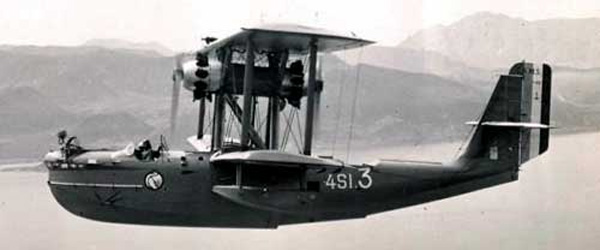 |
Site en Français
|
|
CAMS 55-1

Technical
Specifications
|
Type : CAMS55-1
|
Seaplane Bombardment and
Coastal Recognition
|
Date first flight
|
Summer
1928
|
|
Wingspan
|
20,40 m
|
Lenght
|
14,84 m
|
|
Height
|
5,38 m
|
Wing Area
|
113,45 m2
|
|
Empty Weight
|
4860 Kg
|
Max. Takeoff Weight
|
6910 Kg
|
|
Cruising Speed
|
km/h.
|
Maximum Speed
|
210 km/h
|
|
Climbing Speed
|
|
Service ceilling
|
3400 m
|
|
Range
|
1280 kms
|
Crew
|
3
Men
|
|
Motorization
|
2 engines
Hispano-Suiza 12cyl in V HS12 Lbr of 600ch each
|
|
Armament
|
2 mobile machine-guns
Lewis of 7.7mm in the front post
2 mobile machine-guns Lewis of 7.7mm in the rear post
150 Kgs of bombs
|
108 CAMS 55 were manufactured,
all versions combined. See details in the version section below.
To
date, out of the 108 aircrafts manufactured , 29 are
listed in the list below :

In 1927, the Navale Aviation
issued a program to acquire a Reconnaissance and Coastal Patrol
Seaplane. The CAMS Company (Chantiers Aéro-Maritimes de la
Seine) responded with a seaplane derived from the CAMS 53 Civil,
used by airlines in the Mediterranean Sea. The new aircraft, designated
CAMS 55, is of rustic design. It takes the form of a wooden seaplane
with a Biplan hull powered by two tandem engines. The lower wings
are equipped with small floats at the ends. Its defensive armament
consists of two pairs of Lewis 7.69mm machine guns mounted on two
mobile carriages, in the front and rear stations. The crew is composed
of 5 men. The Prototype makes its first flight in 1928.
The aircraft will enter service in 1930, after completing its tests.
The particular implantation of the engines, in tandem above the
fuselage, will be responsible for some fatal accidents: the propellers
are indeed too close to some of the crewmen... protections will
be added later, but will never completely correct this defect. In
1930, the S1 Squadrons based in Berre and 4E1 based in Karouba,
will be the first units to perceive the new aircraft.
Throughout his career, the aircraft was available in many versions,
including changes in engines. A light alloy fuselage and floats,
replacing wood, will be tested on the CAMS 55-6 version. The weight
saving was interesting : 400 kgs, but the light alloy was finally
not retained on the later versions.
At the outbreak of War, in September 1939, although outdated, 25
copies of CAMS 55 were still present in active units. There were
still 25 of them left during the German attack of May 10, 1940.
At the Armistice, almost all the CAMS 55s had been destroyed: only
two of them were assigned to the Free France 20-S Squadron (Ex 8S-5)
and they flew until January 1941.
|
Version
|
Quantity
|
Descriptive
|
|
CAMS
55-1
|
43
|
Main
version |
|
CAMS
55-2
|
29
|
Version
motorised by a Gnôme-Rhône GR 9Akx of 480cv |
|
CAMS
55-3
|
1
|
Aluminum
hull version. The test pilot Pierre BRUNEL will be killed
during a test : the aircraft turns around at sea trying to
avoid a barge and the pilot drowns ... |
|
CAMS
55-6
|
1
|
Version
motorised by a Gnôme-Rhône GR 9Akx of 480cv driving
a three-bladed propeller with variable pitch |
|
CAMS
55-10
|
28
|
Version
motorised by a Gnôme-Rhône GR 9Kbr of 500cv |
|
CAMS
55-10 col
|
4
|
Colonial
version with reinforced structure to adapt to extreme weather
conditions |
|
CAMS
55-11
|
1
|
Version
motorised by a Gnôme-Rhône GR 9Kdr of 500cv |
|
CAMS
55-14
|
1
|
Version
motorised by a Gnôme-Rhône GR 9Kdrs of 500cv |
Bibliography
1 ) _ LELA-PRESSE
Editions - March 1999
AVION
No
72 : " CAMS 37 with a metal hull "
From
Pierre CORTET

|
2)
_ Larivière Editions - February 1988
Le Fana de L'Aviation No219 : "CAMS Hydroplanes"
6th Part
From Jezan LIRON

|
Photos
Album
|









